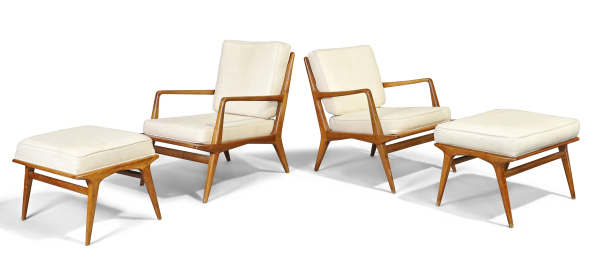Carlo de Carli was an Italian modernist architect and industrial designer who came to prominence during the post-war period. De Carli studied architecture at Politecnico di Milano, graduating in 1934. He went onto hone his skills at the studio of the renowned architect Gio Ponti, before eventually starting his own practice in Milan with Renato Angeli.
De Carli completed a number of significant projects as an architect, such as the Church of Sant’Ildefonso in Milan, the Opera Don Calabria at Cimiano, and the buildings of the Via dei Giardini 7 complex in Milan, which included the Sant’Erasmo Theatre.
De Carli considered nature to be the greatest designer of all, a concept which served as the core ideology of his ‘new architecture’. Many of his radical furniture designs from the 1950s adopted biomorphic forms, focusing on the relationship between space, material and the human body and gesture.
From the fifties to the early seventies De Carli created pioneering furniture designs for some of the leading industrial design companies and retailers of the period. This included Cassina, for whom he produced his Model ‘802’chairs, which were subsequently chosen by Gio Ponti to furnish the interiors of the Hotel Parco dei Principi, Sorrento. Ponti introduced De Carli to American company Singer & Sons, who distributed his Model ‘114’ lounge chairs in North America. De Carli also created designs for Osvaldo Borsani’s company Tecno, as well as the Danish company Gubi.
De Carli was highly celebrated during his lifetime, winning the Compasso d’Oro in 1954 for his Model 683 chair for Cassina and the Triennale Grand Prix in 1957 for his Balestra armchair for Tecno. Between 1965 and 1968, he served as Dean of the Faculty for Architecture at Politecnico di Milan, where he continued to teach until 1986. De Carli was a keen essayist, writing extensively on the relationship between human form and design, with a collection of his most important essays are collated in his book Primary Space Architecture, published in 1982.
